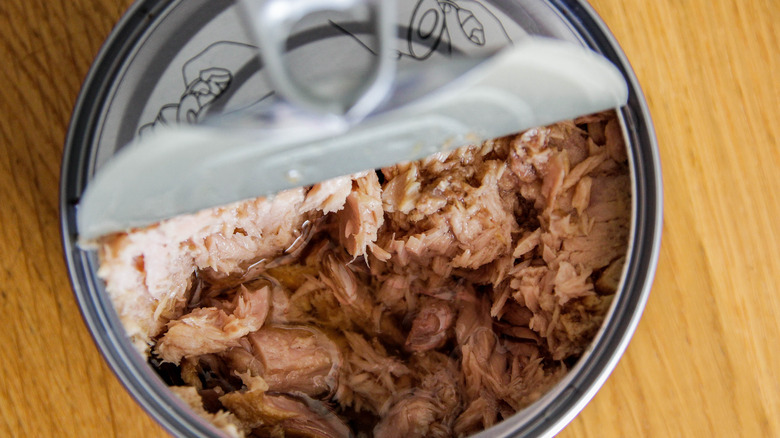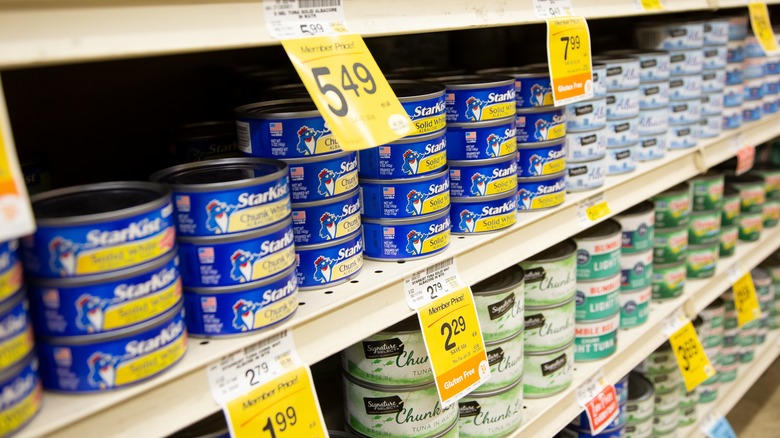The Obvious Signs You Should Throw Out Canned Tuna
According to the National Fisheries Institute, canned tuna is the second most popular seafood product in the U.S. With its mild savory flavor, lean protein content, healthily processed meat, and long shelf life, it's no wonder we consume one billion pounds of it every year. However, even strictly monitored canning processes won't extend canned tuna's shelf life indefinitely. Luckily, there are obvious signs to help you determine if canned tuna has gone bad.
You can start with visual signs of spoilage by inspecting the can or pouch for dents, rust, leakage, and bulging. While you might think that canned tuna contains preservatives, this is one of various myths about canned tuna. Tuna is cooked and packed with water or oil into the cans and pouches we buy. When the packaging incurs dents or holes, this introduces oxygen, which promotes the growth of dangerous bacteria. Bulging of the cans or pouches is often the result of bacteria releasing gasses.
Once you've opened the can, dull, mushy coloring, black or dark lines throughout the meat, or meat that has separated into non-cohesive flakes are additional visual clues of spoilage. If visual clues aren't obvious, smell is the next best sign; a rancid, acidic smell is very easy to distinguish from the normal fishy, meaty odors canned tuna usually emits. The last resort is to taste a tiny teaspoon of tuna out of the can. If it tastes acidic or different from what you expect, throw the can out.
How to properly store canned tuna
While canned tuna will eventually spoil, its shelf life lasts between two and five years. And many cans are still good far past the best-by date printed on the metal. The best way to maximize the shelf life of canned tuna is through proper storage practices. You'll give canned tuna the longest lifespan by storing it in a dark, cool, climate-controlled pantry or cabinet.
Exposing the cans to heat, sunlight, or even drastic changes in temperature will significantly shorten their shelf lives. Not only will outdoor heat compromise cans, but heat from appliances is just as harmful. Consequently, don't store cans next to ovens or any other appliance that generates heat. You also shouldn't bury the cans under heavy objects that might cause the dents and punctures that lead to bacterial growth.
Once you've opened a can of tuna, you should remove any leftovers from the can to store in the fridge in an air-tight container. Refrigerated canned tuna will only last another day or two. The bottom line when it comes to spoilage signs is to err on the side of caution; when in doubt, just toss it! Ignoring a concerning visual cue, odor, or taste to salvage an old can of tuna is not worth the suffering that food poisoning can bring. The most common forms of poisoning from canned tuna are botulism and scombroid fish poisoning, both causing nausea and vomiting along with other more life-threatening symptoms.

